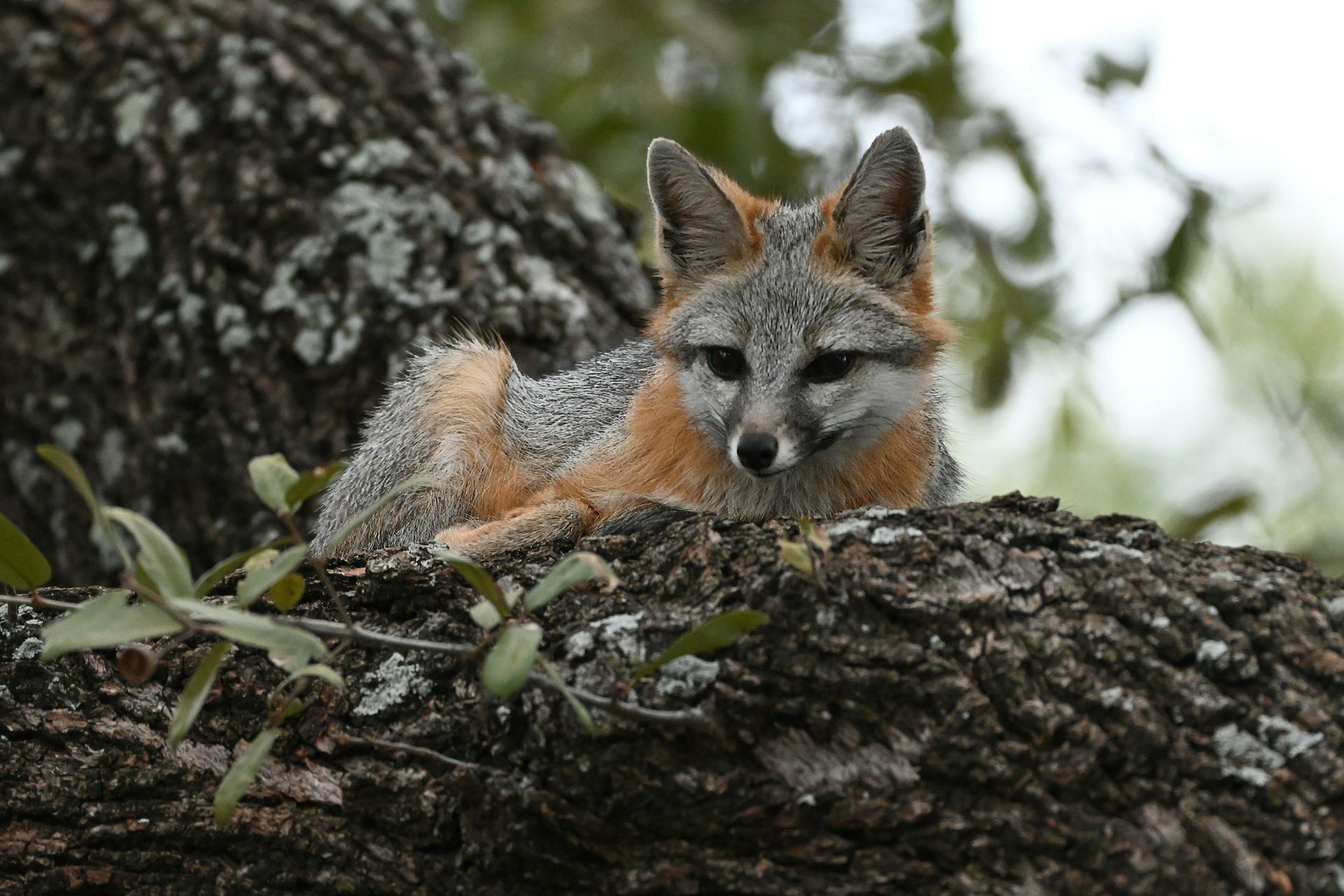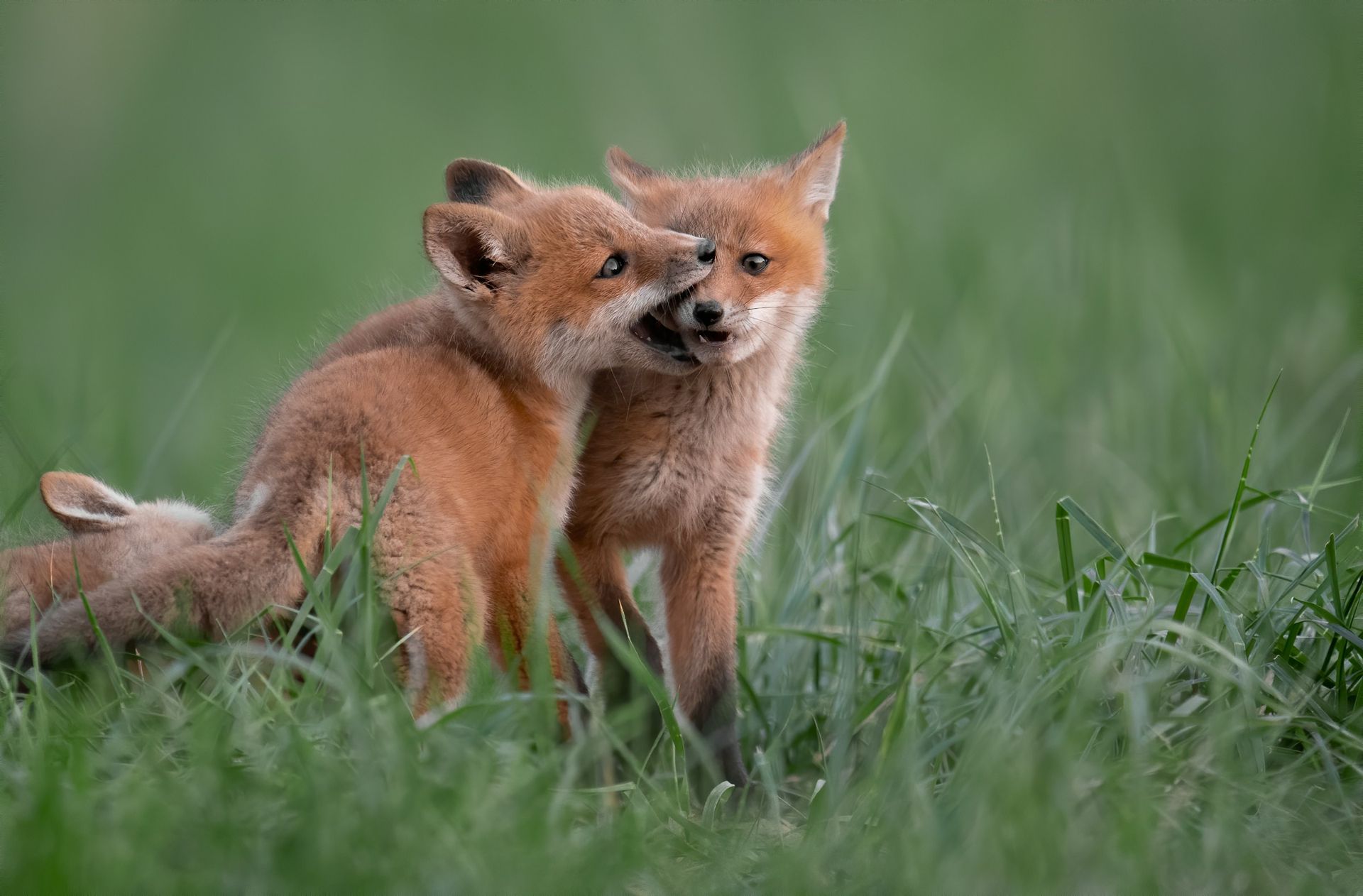Foxes are small to medium-sized omnivorous mammals known for their intelligence, adaptability, and bushy tails. Found on nearly every continent, foxes thrive in a variety of habitats, including forests, grasslands, deserts, and urban areas. As opportunistic feeders, they play a critical role in controlling rodent populations and maintaining ecological balance.
Typically weighing between 8-15 pounds, foxes have slender bodies, pointed ears, and long, bushy tails, which help with balance and communication. Their fur ranges from reddish-brown in the red fox to gray or pale tan in other species, providing excellent camouflage in natural surroundings.
Foxes are solitary hunters, primarily active at dawn and dusk. They feed on small mammals, insects, fruits, and even carrion. During the breeding season in late winter, foxes form monogamous pairs. Females give birth to litters of 4-6 kits in dens, which can be found in burrows, hollow logs, or under structures. The kits remain with their parents until they are old enough to establish their own territories.
Predators of foxes include coyotes, eagles, and larger wild cats, but human-related threats such as habitat destruction, vehicle collisions, and trapping pose significant risks. Despite these challenges, foxes have shown remarkable adaptability and continue to expand their range in both rural and urban environments.

For your safety and the well-being of wildlife, please observe animals from a distance and avoid touching or disturbing them. If you encounter an animal that appears injured or in distress, contact a licensed wildlife rescue organization for guidance before intervening.
Found An Animal? Not sure how to help a wild animal in need? Learn when to step in, who to call, and how to help safely.
Did You Know?
- Foxes have vertical pupils, like cats, which help them see well in low light conditions.
- The red fox is the most widely distributed carnivorous mammal in the world.
- Foxes communicate using a variety of vocalizations, including yips, howls, and barks.
- They have whiskers on their legs and face to help them navigate in the dark.
- Unlike many wild animals, foxes are known to cache surplus food for later consumption.
- Foxes can jump over 3 feet high and use their agility to escape predators.
- Arctic foxes change the color of their fur with the seasons, from white in winter to brown in summer.
- Each fox has a unique scent, which they use to mark their territory and communicate with others.
- Foxes are excellent swimmers and will cross rivers or streams in search of food.
Problems Faced In The Wild
- Habitat Loss: Urban expansion reduces available dens and foraging areas.
- Vehicle Collisions: Roads fragment habitats and pose significant risks for traveling foxes.
- Poisoning: Rodenticides and other poisons can harm foxes indirectly when they consume affected prey.
- Human-Wildlife Conflict: Encounters with humans can lead to lethal control measures, especially in urban areas.
- Disease Transmission: Foxes can contract diseases such as mange and rabies, which impact populations.
- Climate Change: Alterations in prey populations and habitat conditions affect fox survival rates.
Tips For Cohabitation
- Secure Trash and Food Sources: Keep garbage cans sealed and avoid leaving pet food outdoors.
- Protect Pets: Supervise pets, especially at night, and use secure enclosures for outdoor animals.
- Avoid Feeding Foxes: Feeding wildlife encourages habituation and increases the likelihood of conflicts.
- Use Motion-Activated Deterrents: Lights, sprinklers, or noise devices can discourage foxes from approaching properties.
- Preserve Natural Spaces: Protect wooded areas and open land to ensure stable fox populations



